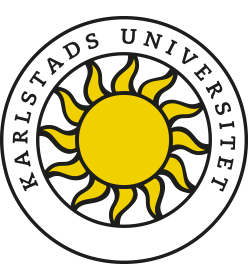Vol. 14 No. 2024:3 (2024): Nordidactica 2024:3
The third issue of Nordidactica in 2024 is perhaps smaller in number of articles than other issues this year, but it has a bigger significance for us, because through it we are saying farewell to our two-year period as editors of the journal. During these two years we have aimed at keeping up and further raising the quality of the journal. There are many factors that have helped us in this quest. First and foremost, it requires a solid reputation to attract researchers in our field to submit their work to the journal. We are grateful in this respect to our predecessors and to all who have contributed to the establishment of Nordidactica since 2011. We also wish to thank everybody who has placed their trust in Nordidactica and sent their manuscripts to be reviewed and published. Second, success has relied in part on a lot of voluntary work from several distinguished scholars. Despite the global challenges to find peer reviewers, we have always been capable of finding colleagues who said ‘yes’ and did the peer reviews within shorter times than in many international journals. Moreover, we could always count on support from technical editor Anders Broman and the editorial board chaired by Johan Samuelsson. In the academic world with ever-growing pressures and workloads this is not self-evident, so we sincerely wish that there will be the will and ability to contribute to the Journal in the Nordic academic world in the future, too.
While Nordidactica serves the Nordic community of researchers of education in the humanities and social studies as a whole, the current issue, incidentally, focuses explicitly on history education. In the research design of Anders Persson and Mikael Berg, Nordidactica is treated as a significant platform of Nordic research on history education. They conducted a longitudinal study of Nordidactica’s history exploring how history didactics articles have used theory in 2011–2022. Their analysis leads to discussion on whether educational research should strive for a balance between approaches that justify theories and generate them. They also suggest that theories should shape educational practice but also listen to teachers’ questions and conceptualisations based on lived realities.
The article by Yngve Skjæveland, Birger Andreas Marthinsen and Linn Maria Magerøy-Grande is very near to the lived realities of history education as it is based on an action research project in an upper secondary school in Norway. It follows upper secondary school students making sense of historical secondary sources. Although many students found the task challenging, which decreased their enthusiasm, the authors conclude that long-term work on the interpretation and assessment of sources and academic writing skills are essential.
Alexandre Dessingué has also worked on Norwegian upper secondary students’ relationship to history. When exploring their perception of and interest in history he found four types of chronotopes behind the connection they made with history: chronotope of actualisation (significance of past to identities and current social structures), chronotope of distanciation (curiosity toward distant times and phenomena), chronotope of anticipation (history’s role in shaping the future) and chronotope of disconnection (perceived disengaging content).
Johannes Heuman’s contribution takes us to theoretically review emotions in history education, but also to the past as he illustrates his theoretical model through examples from Swedish upper secondary history education in the 1860s. He argues that history didactics would benefit from discussions concerning emotions in historical research. Hence, his three-step analytical model is based on Barbara Rosenwein’s work. It consists of focusing on emotions in policy, content and interactions and highlights the importance of recognising emotions as a significant component in history education, with opportunities, challenges and areas of conflict.
As editors, we have learned a lot during these two years. Besides learning to read (and listen to) multiple Scandinavian languages, we have enjoyed the opportunity to read Nordic research on humanities and social sciences education and to observe emerging concepts and popular theories as well as diverse methodologies. Besides empirical research, Nordidactica publishes theoretical articles that promote discussion on current topics and developments in education within our subjects – and there certainly seems to be a need for this kind of platform, as the current issue proves.


